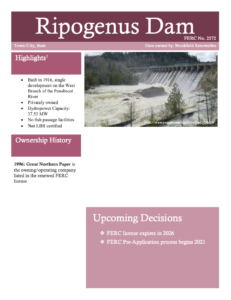Climate Change Impacts in the Northeast and Mid-Atlantic—And What We Can Do
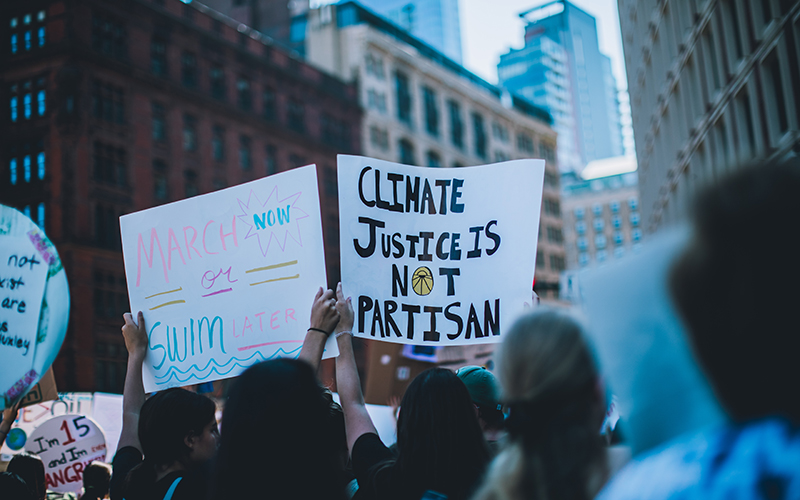
Climate change does not affect all regions the same. And its impacts vary from season to season.
These regional and seasonal discrepancies are attributed to the fact that weather patterns across the globe already differ in “normal” climate conditions. As these patterns shift, the climate in different regions shifts accordingly—and sometimes unexpectedly.
“It’s not like there’s a big blanket over the Earth and we’re going to warm at the same rate—the Earth is variable,” says Georgia Murray, AMC’s staff scientist.
So how exactly is the Northeast’s climate changing? Experts say winters are getting warmer and shorter, major rainfall events are increasing, and weather patterns are becoming less predictable and more extreme. Rising sea levels globally have also led to dangerous storm surges and more frequent astronomical high tides. We’re already seeing the impacts of many of these changes, and if nothing is done to mitigate climate change, the effects on outdoor recreation, wildlife, the economy, agriculture, and our ways of life are projected to be altered dramatically.
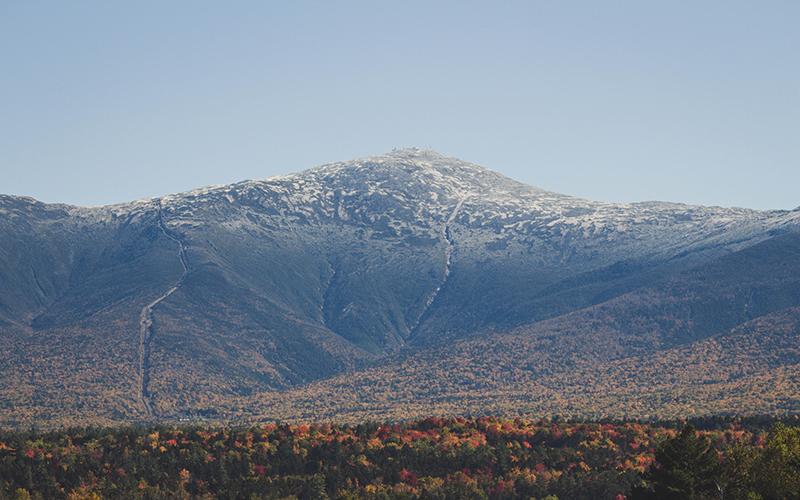
Shorter and Warmer Winters
AMC’s scientists, in collaboration with researchers at University of New Hampshire, University of Winnipeg, and the Hubbard Brook Research Foundation, have been studying how winters in the Northeast are shifting.
The conclusion: winters are changing faster than the other seasons and are now shorter, milder, and less snowy.
The researchers, including Dr. Sarah Nelson, AMC’s director of research, compiled 100 years of meteorological data across the northeastern U.S. and Atlantic Canada. Since 1917, the Northeast has lost about 19 days with snow cover as well as 20 frost days—when it is below 32 degrees Fahrenheit, cold enough to keep snow frozen. Overall, winters are now roughly three weeks shorter, due largely to an earlier arrival of spring weather. “The character of winter is changing,” Nelson says.
In the White Mountain National Forest, AMC’s Murray has been leading research on the effects of climate change in Pinkham Notch and on Mount Washington’s summit. Weather data collected since 1935 suggests that all seasons are warming, but especially the winter at Pinkham Notch, while spring is the fastest warming season at the summit.
While climate is clearly changing in the mountains, some weather variables, like snowfall, are more difficult to characterize—strong winds near the summit create drifts, for example. So, this year AMC has joined the Community Snow Observations project. In this community science initiative, backcountry adventurers record snow depth in a smartphone app, which helps scientists fill in gaps in their data, improve their climate models, and better understand how winters are changing.
Shorter and warmer winters will have a variety of effects on water quality, flooding, public health, cultural traditions, and forest health. For example, longer summers increase the number and geographic range of disease-carrying insects, and longer autumns allow the winter tick to overwhelm and kill moose in New England.
And importantly for the Northeast, these shifts in weather mean a major impact on outdoor recreation.
In Maine, the season for snow-based activities like downhill skiing, cross-country skiing, snowmobiling, and snowshoeing will be shortened, affecting local economies that rely on winter tourism. And since a shorter winter also means a longer summer, recreation infrastructure used more heavily in the summer, such as hiking trails, will need more maintenance.
“We saw the strain on infrastructure this past summer with [COVID-19],” Murray says. “Now we’re going to have an even longer summer when spring is earlier and fall is later. That impact on resources is longer and exceeding what a typical season is for maintaining safe trails.”
AMC’s trail maintenance programs are helping to maintain this infrastructure, and hikers can do their part by practicing the seven Leave No Trace principles while enjoying the backcountry.

Increased Rainfall and Stronger Storms
Even though the Northeast may be experiencing less snowy winters, precipitation as a whole has actually increased in the Northeast and across most of the U.S.—mainly through rainfall.
Scientists attribute much of the increase to higher rainfall intensity. Between 1901 and 2016, annual precipitation in the heaviest 1 percent of storms increased by 38 percent in the Northeast, significantly more than most other regions of the country. Put simply: the climate is getting wetter as storms are getting stronger.
Scientists can’t say for sure that a specific storm was caused directly by climate change, but they do know that in a warmer climate, stronger storms are expected.
While agriculture in the Northeast could potentially benefit from the shorter winters, excess moisture is already one of the leading causes of crop loss, according to the Fourth National Climate Assessment. And increased run-off changes temperatures and worsens pollution in aquatic ecosystems, which can cause health issues for both wildlife and humans. One study also found that by 2080, river habitats for dragonflies and damselflies—which generally indicate ecosystem health—will decrease by 45 to 99 percent by 2080.
And there are also potential impacts on recreation: in the summer of 2011, Hurricane Irene caused more than $10 million of trail damage in the White Mountains alone, leaving trail crews from AMC and other organizations scrambling and closing down a few hiking routes for good. The following year, Hurricane Sandy—which weakened to a superstorm when it reached landfall—caused significant blowdowns and erosions on trails in the mid-Atlantic.
In addition, while rainfall totals are increasing in the Northeast, there have also been more droughts. Similarly, in the winter, there has been less snow, but stronger storms in the shoulder seasons. Scientists call this pattern of severe weather changes—and their unpredictability—“weather whiplash.”
“There’s just more variability and back and forth from cold to warm and from wet to dry,” Nelson says. “There’s an outsized impact of getting weather at the wrong time of year when we’re not expecting it.”
The Northeast saw an extreme example of “winter weather whiplash” in October of 2011 when a major winter storm dumped several feet of snow across northern New England—before leaves had fallen off the trees. While a storm like that would not cause a major impact in February, the timing caused 3 million customers to lose power, among other damage.
Unfortunately, models predict that these “weather whiplash” events could increase in frequency as the climate continues to warm overall. And because of their unpredictability, it’s still unclear how exactly the trend will develop over time.
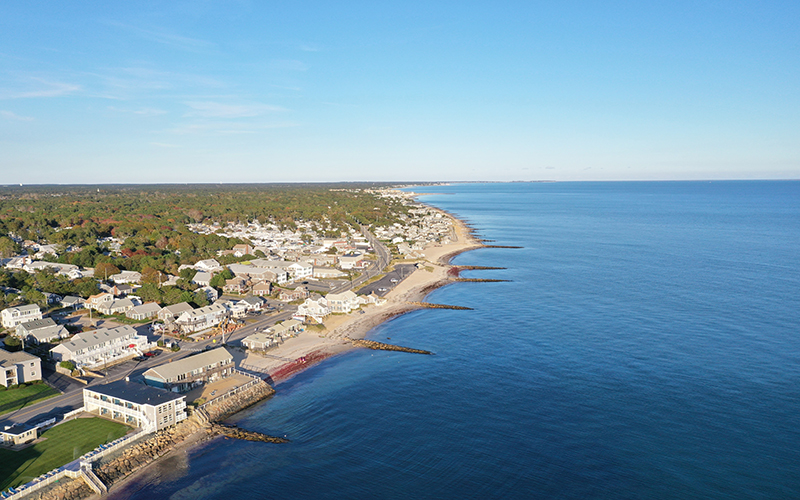
Rising Sea Levels
Many factors contribute to rising sea levels, but scientists are most concerned about melting ice in the Arctic and Antarctic regions and the thermal expansion of water due to rising global temperatures.
As these factors worsen due to rising temperatures, sea levels in the Northeast have been rising 3 to 4 times faster than the global average. By 2100, sea levels are projected to rise 2.5 to 4 feet, in an “intermediate” emissions scenario, or more than 11 feet in the worst scenario, according to a 2018 interagency federal report.
That could bring increased severe flooding in some coastal regions. Rocky coastlines or developed coastal regions don’t have much resiliency to flooding and will gradually flood. Coastal areas with beaches, bluffs, and wetlands have evolved to more dynamic conditions, so uplands and forests near the coast will likely gradually transition into marshes.
In either scenario, the habitats in these areas will shift, which will affect wildlife living there, including causing some shorebirds to migrate elsewhere. Property owners in coastal regions are also at risk of losing their homes, and economies based on beaches may be impacted. A recent report projects that by 2051, annual flood damage to properties in Massachusetts will increase to about $316 million per year.
Several communities—including major cities like Boston and New York—have already begun planning for flooding along the coast by incorporating green infrastructure principles for new developments and implementing new building codes.
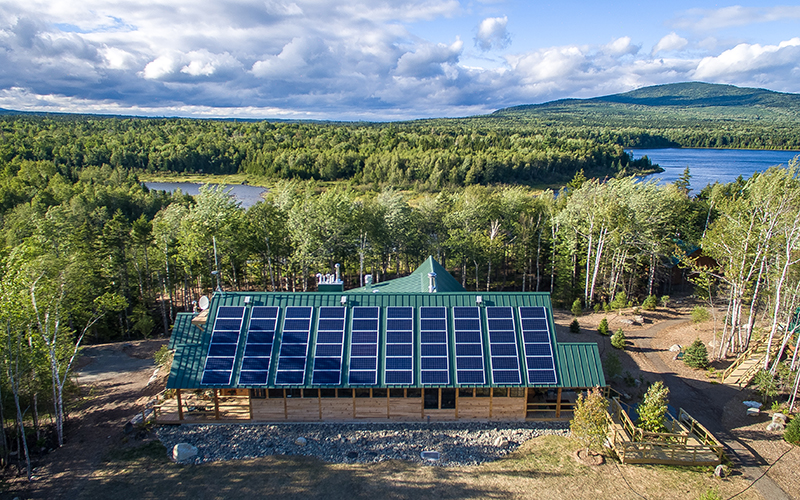
We Must Reduce Emissions
While steps are being taken to mitigate these impacts in the Northeast, nearly all climate change models point to one action that could reduce or eliminate them: reducing greenhouse gas emissions produced largely from the burning of fossil fuels.
In the upper atmosphere, greenhouse gases, such as carbon dioxide (CO2), trap in heat from the Sun that is reflected back from the Earth’s surface—this is known the greenhouse effect. The more CO2 and other greenhouse gases, the more heat is trapped.
“Emissions drive temperature, and therefore climate as we measure it,” Nelson says. “[So] it matters if we reduce our carbon emissions.”
AMC is currently working on an initiative to be net-zero for carbon emissions by no later than 2050, which includes reducing emissions from both internal sources and indirect sources, such as guest travel and supply chains. AMC’s conservation team also advocates on a policy level for energy efficiency programs, residential solar energy, and reduced transportation emissions, like the Transportation and Climate Initiative (TCI-P).
LEARN MORE:
- Support climate action and energy efficiency in your state.
- Advocate for cleaner and more equitable transportation solutions.
- Read all the Northeast and Mid-Atlantic states’ plans for addressing climate change.
- Debunk these 5 common climate change myths.
- Learn about the main effects of climate change.
- Learn the difference between climate and weather.
- Join AMC’s fight against climate change through the use of carbon credits.
The post Climate Change Impacts in the Northeast and Mid-Atlantic—And What We Can Do appeared first on Appalachian Mountain Club.


